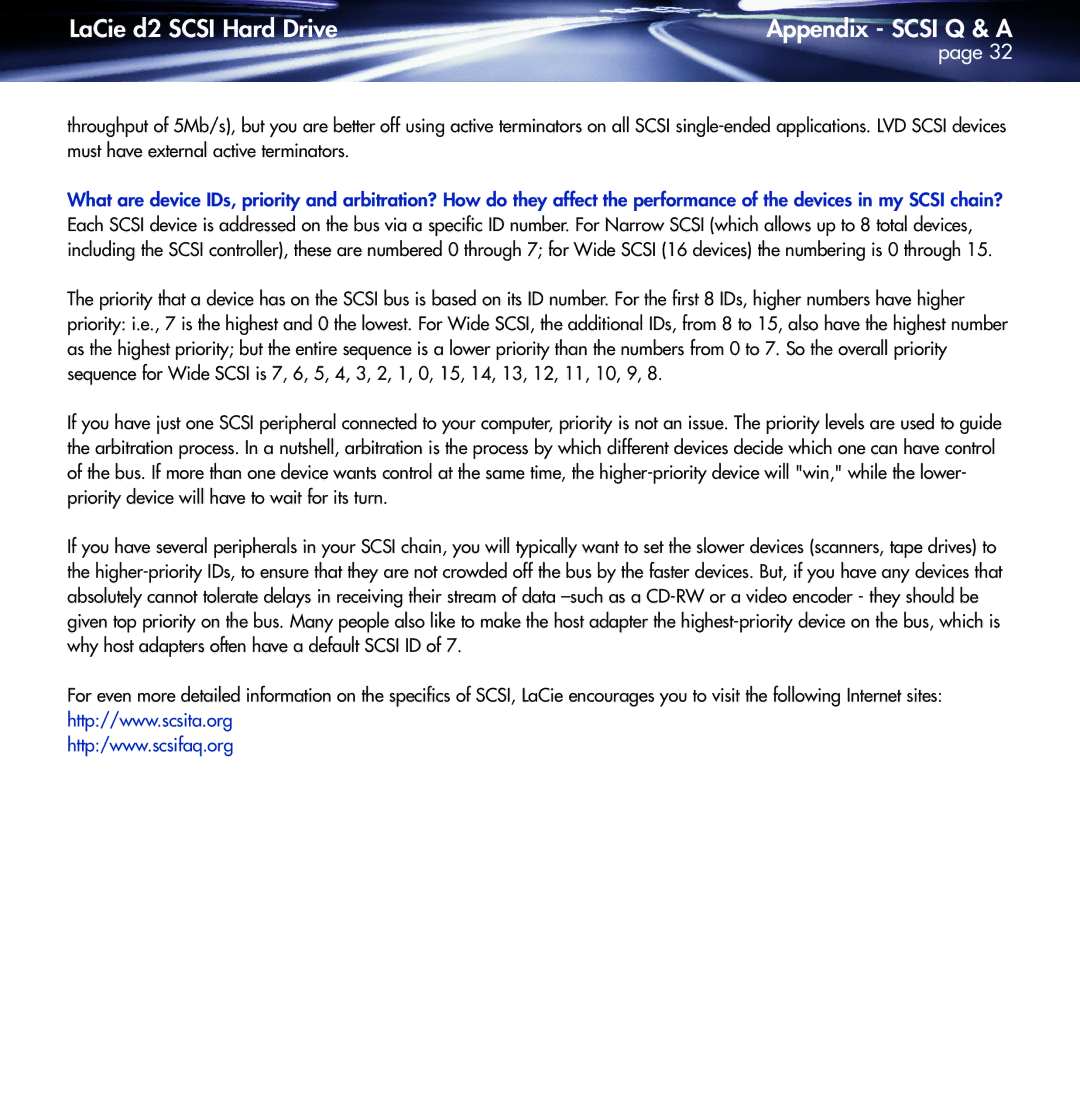
LaCie d2 SCSI Hard Drive | Appendix - SCSI Q & A |
| page 32 |
throughput of 5Mb/s), but you are better off using active terminators on all SCSI
What are device IDs, priority and arbitration? How do they affect the performance of the devices in my SCSI chain? Each SCSI device is addressed on the bus via a specific ID number. For Narrow SCSI (which allows up to 8 total devices, including the SCSI controller), these are numbered 0 through 7; for Wide SCSI (16 devices) the numbering is 0 through 15.
The priority that a device has on the SCSI bus is based on its ID number. For the first 8 IDs, higher numbers have higher priority: i.e., 7 is the highest and 0 the lowest. For Wide SCSI, the additional IDs, from 8 to 15, also have the highest number as the highest priority; but the entire sequence is a lower priority than the numbers from 0 to 7. So the overall priority sequence for Wide SCSI is 7, 6, 5, 4, 3, 2, 1, 0, 15, 14, 13, 12, 11, 10, 9, 8.
If you have just one SCSI peripheral connected to your computer, priority is not an issue. The priority levels are used to guide the arbitration process. In a nutshell, arbitration is the process by which different devices decide which one can have control of the bus. If more than one device wants control at the same time, the
If you have several peripherals in your SCSI chain, you will typically want to set the slower devices (scanners, tape drives) to the
For even more detailed information on the specifics of SCSI, LaCie encourages you to visit the following Internet sites: http://www.scsita.org
http:/www.scsifaq.org
